


Planet COVID-19 is the time for brands and advertisers to finally take online seriously
share on
Under the spectre of the COVID-19 pandemic, countries are shutting their borders, people are being quarantined or self-isolating and businesses - fighting to stay afloat - that are able to operate remotely are having their employees stay home to work online. This means that people are spending much more time on smart devices, with online content consumption rising enormously.
In this current climate, while other formats flounder, online advertising can cause the growth of ad spend and boost online sales but only for those industries that don’t require people to go outside. While promoting seasonal activities, like sports events, music gigs, and social gatherings, makes little sense, businesses can still figure out how to adjust to the rapidly changing circumstances of this huge challenge and reveal big advertising opportunities.
How COVID-19 affects ad spend across industries
Travel, transportation, restaurants, and specific retail categories are currently experiencing the biggest crises in recent memory, and naturally, ad spend for these businesses has dropped. Some retailers are approaching the state of bankruptcy, while others are seeing no option but to close their brick-and-mortar stores until the outbreak ends.
Categories like news and lifestyle goods have also been affected by COVID-19. Ad spend across them has decreased though not as dramatically as the previously mentioned sectors. Meanwhile, ad spend in computing, hobbies, games, and beauty products has risen vertically, since in some countries, online shopping and entertainment are the only joys that people can currently afford.
The global lockdown bolsters media consumption
Since more people are staying home, it comes as no surprise that traffic across all environments jumps up, especially on CTV, OTT, and mobile. If we compare 12-18 March to the previous period of 5-11 March, we can see an uprising watch trend.
Because of changing media consumption patterns, advertising budgets are largely being redistributed to online broadcasting.
Here’s how some brands have been reacting to this situation:
- Sky Deutschland and other video services are making their content free for a month to stimulate greater video watching.
- Canal+ and online movie services are opening access to their paid content for free.
- BBC is supporting the initiative to broadcast free education, fitness, and cooking TV programming.
- Esports companies have shifted all of their competitions and gatherings online, which is where they originated from.
- Traditional sports federations, including NASCAR, are transitioning to virtual online simulations.
- The majority of brands have invested their ad spend in OTT and CTV instead of linear TV because that’s where users can access content on-demand and see ads more frequently.
Ad channels that stay in-game: CTV, mobile, in-app
Employees that typically work from Monday to Friday with fixed working hours normally consume video content much less than people who work remotely — 25 hours, 2 minutes and 21 hours, 56 minutes, respectively.
People who work from home also normally give preference to mobiles and tablets when it comes to digital entertainment. They spend 4.5 hours per day on these devices compared to three hours spent by non-remote employees. With the whole world on lockdown, this ratio and general watching patterns are expected to even out across different audience segments.
Right now, desktop coupled with mobile accounts for 88% of U.S. video watching. As COVID-19 continues to take hold in new regions across the world, overall media video content consumption may increase by 60%, stirring up a larger demand for CTV and mobile video ad inventory.
Furthermore, mobile gaming has climbed by 25%. Starting from February 2020, traffic on mobile gadgets, as well as ad spend, has increased by at least 25%, according to SmartyAds data. COVID-19 has apparently contributed a lot to this because mobile gaming companies thrive because people are playing games more, and consumers now have the time to do so.
Still, app monetization is one of the biggest hurdles that app publishers face, and while the global app market is expected to grow to $102 billion by the end of 2020, about 60% of developers earn less than $500 a month and only 0.01% of apps become financially successful. Finding an effective monetisation method is the key to capturing a slice of the growing mobile market.
At the same time, publishers and developers need to be careful. The screens of smartphones and tablets have limited space, so developers should make sure that advertising does not interfere with gameplay.
I’ve selected the least intrusive and most mobile-friendly formats on my own company’s platform to analyse how their performance has been changing during the past couple of months:
Rewarded video format.
Rewarded ads offer watchers in-game bonuses in exchange for ad viewing. Because they provide value to users, they are preferred by 70% of mobile gamers. In March 2020, normal eCPM of rewarded videos accounted for $15.75 which is 10% higher than a few months before.
Playable video format.
Playable ad formats also don’t interfere with the in-game experience. Ads pop up onscreen at logical gaming intervals, for instance, in-between game levels. It looks like another mini-game that the user tries, indeed it is an ad that enables a 30-second-long game test and offers a download of the full version. This ad type made ~15,1% CTR in March, which is 8% higher than in February.
Native video format.
Native videos do not use direct calls to action, neither do they appear as annoying commercials. Rather, they look like part of the content, resembling a useful tutorial or educational material, depending on the subject of the app. These ads also provide additional value, leading them to be actively reposted and shared when placed on social media. In March, their CTR was ~11,0%, 10% higher than in February.
How to respond to the changing situation?
COVID-19 has certainly jeopardised the advertising ecosystem, but just as we will all eventually pull through and recover, so will the global economy. It will be a great challenge but also a new opportunity for those advertisers that haven’t yet invested their media-budgets in OTT/CTV/mobile/in-app ad channels yet. It looks like the world will be staying indoors for at least the next couple of months, thus, advertisers still have time to diversify their media mix and relocate budgets into the most profitable channels.
If your brand has been affected by COVID-19, try to think of new ways that replace offline experiences with online, just like the majority of retailers do. Sports, entertainment, and educational content will now be streamed via OTT/CTV and mobile channels, so don’t lose that chance to promote your service or product when people are most susceptible and attentive.
Here are four strategies that can help your business cope with COVID-19 aftermath:
1) If you closed physical stores, target suitable audience segments with ads that lead them to your online store.
2) Apply retargeting to find your existing customers and redirect them to your online store.
3) Use geo-marketing campaigns to address only relevant local audiences per household, especially if you don’t work with international markets.
4) Choose popular mobile, video, and OTT/CTV channels and notify people that you shifted online, adopted delivery services, changed policies, etc.
Brave new world
While for some industries COVID-19 will wreak havoc, it can also be an opportunity to redefine existing business workflows and find new promotion opportunities for your product or service. Why? Because in such situations, people stick to things that comfort them the most: television, mobile gadgets, and games. It results in traffic spikes across these channels and it is a great chance to bulk up on streaming content on different devices. Embrace new formats, channels, and formats to get closer to your audiences and explore new ways of expanding your reach to prime your brand for success in the post-COVID-19 future.
Ivan Guzenko is a tech-minded entrepreneur, ad tech and mar tech expert, and the founder of SmartyAds, an award-winning international full-stack programmatic software development company. His deep knowledge and startup experience allowed him to get in on the ground floor of innovative technologies, collaborate with like-minds, and gather immense knowledge that he shares in articles covering digital marketing and advertising.
Related articles
Lessons from Black Mirror: Why future users will still be watching ads
6 ways to put a twist to your content marketing in the COVID-19 age
share on
Free newsletter
Get the daily lowdown on Asia's top marketing stories.
We break down the big and messy topics of the day so you're updated on the most important developments in Asia's marketing development – for free.
subscribe now open in new window

